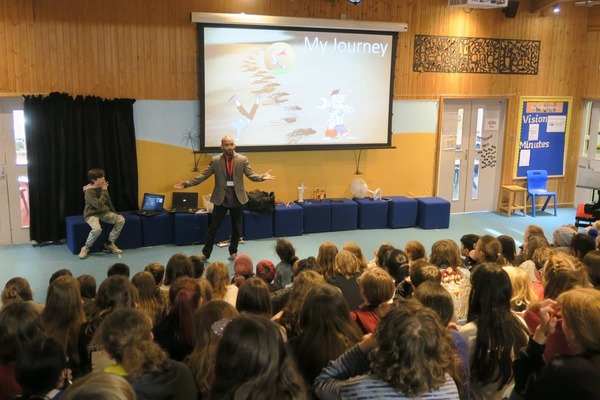All Posts
The Art of School Speaking
I’m a qualified engineer and professional street dancer, and I have been delivering school workshops and speaking engagements at schools for the past few years. My speeches to students cover Science, Technology, Engineering and Mathematics (STEM) subjects as well as motivational talks. Additionally, I have worked with children in education, entertainment and tutoring. I have delivered well over a hundred engagements during that time, and in this article, I want to talk about why I have been so successful engaging with the students.
I have both an academic and an art background which has helped to bring in two dimensions to my speeches. However, there is a lot more to it. I truly believe if you want to connect with students you need to be willing to reach down to their level, but that doesn’t mean you can’t keep your professional barrier. I also found that you need to use different methods to engage with different age groups.

With secondary school students, I use opportunities to reflect to my teenage during the engagements. I remember during one session the students asked me questions about my FIFA tactics. They asked me these questions because I told them I eventually became successful at everything I have done because I didn’t want to give up “even when I was playing FIFA”. Go back to your teenage and think what do you want to hear if you sat in an assembly? Another teacher talking about science or a science teacher who loves your teenage passions? You can bring in current affairs in football or celebrity gossip to add to the talks. Use it sparingly in between your main content don’t go overboard with it. Additionally, you can use humour in your speeches with this age group that relates to the current trends as they are wise enough to understand them.
With primary school children, it does take a lot more effort to keep them engaged as they have a very short attention span. At the start of the engagement, I tell them that I will only pick those that behave well to be volunteers and this helps to stop them from getting distracted by their friends. Be prepared to stay on top of your voice and if you stay on a topic for too long, they can lose interest. You have to mix things up and be willing to adapt from your rehearsed script. Don’t take a script with you to read although you can have few bullets points written on a card in your pocket, just in case you have a moment of brain freeze. I don’t think I have ever done the same engagement twice with this age group. I also get them involved in mini activities like asking for volunteers to come up on stage and drive a little robot car or do a dance move. I usually find that primary school children are braver as they always like an opportunity to show off to their friends. They don’t have much fear.
With any age group, I try to make my engagements interactive as possible through a mix of videos, dancing, and science demonstrations. Finally, save the best for the last, but tell the children about it at the start. For example, during my speeches, I tell the students I will dance at the end and it keeps them interested until the end. Quite often during an assembly, I would get interrupted and they would ask me “are you going to dance now?”. Overall, aim to leave the students not just with knowledge but a memory they can take away at the end of the session.
Check out our school speaker section for more information on educational presentations here.


